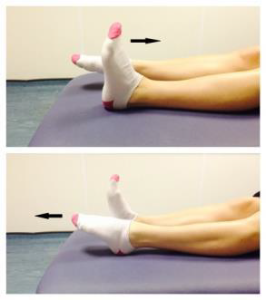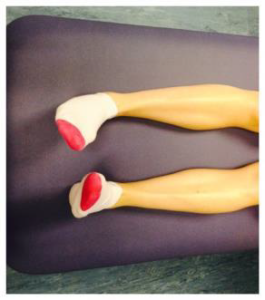Neurodiversity information for parents and young people
This information is for anyone who has a broken (fractured) toe or when the joint comes out of place (dislocated).
General advice


Swelling is often worse at the end of the day. Resting with your foot up, and using ice or cold packs, will help. You can also take pain killers. Mild pain and swelling is normal for 3 to 6 months after your injury.
![]()

Strapping the toes is sometimes needed. This is when you tape your injured toe to the toe next to it. This is only to protect the injured toe and make it more comfortable, not to help healing. If necessary, it is done in the emergency department before you leave hospital.
You can reduce how much you use the strapping as your toe becomes less painful.
You can put weight through your foot. You may find it easier to use crutches or walk on your heel in the early stages.
Start to exercise as soon as possible. See below for details.
![]()
![]()
We do not usually book to see patients again. With this injury, most people recover well by following the instructions we give here.
![]()
Caring for your injury: week 1 to 2
- To make it more comfortable, tape your injured toe to the toe next to it. Do this for the first 2 to 3 weeks, as needed.
- Wear a shoe with a stiff sole.
- If necessary, put most of your weight on your heel.
- Rest your foot, especially in the first 3 days. Raise your foot on a stool or cushions so that it is above the level of your hip. This will help to reduce the swelling.
Exercises
Early movement of the ankle and foot is important to promote blood flow and reduce the risk of a blood clot. You can find out more, including symptoms of a clot, on the NHS website.
- Do these exercises 3 to 4 times a day.
- Start straight away.
- Move gently and within comfort. You do not need to push into pain.
1.

- Repeat this 10 times.
2.

- Repeat this 10 times.
3.

- Repeat this 10 times.
Caring for your injury: week 3 to 6
Stop taping your toes. Try to return to wearing normal shoes.
It is normal to still have mild discomfort and swelling. This may continue for 3 to 6 months.
Activity and exercise
- Keep doing your exercises until you have full movement in your foot.
- Gradually increase your activity.
- Avoid anything that involves impact for 6 to 12 weeks. This includes running, jumping and dancing.
Contact information
Trauma Triage Clinic
Telephone:
020 8934 6983
Monday to Friday, 8am to 4pm
For urgent queries outside these times
call NHS 111
Email: Khn-tr.orthopaedics@nhs.net